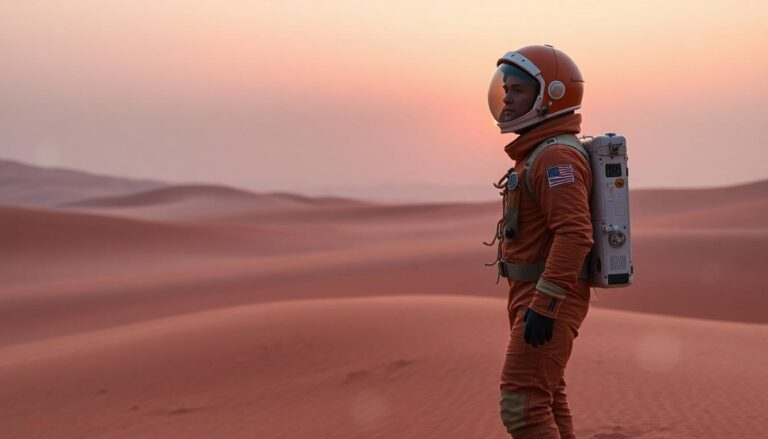Ready Player Two Review: What to Expect in Ernest Cline’s Sequel
In Ready Player Two, Ernest Cline invites readers back into the immersive universe of the OASIS, continuing the adventure of Wade Watts. This sequel builds on the foundation set by its predecessor, Ready Player One, by introducing groundbreaking technology that lets users record and replay their real life experiences.
As Wade faces new challenges, he embarks on a quest to find the elusive “Seven Shards of the Siren’s Soul,” all while navigating the complexities of friendship, love, and the darker side of technology. Readers will find familiar echoes of 1980s pop culture intertwined within a narrative that grapples with themes of human connection and the consequences of our digital lives.
This review will highlight key elements, including character development, plot twists, and the deeper themes at play, giving you a comprehensive look at what to expect from this thrilling sequel. Whether you’re a long-time fan or new to Cline’s work, there’s plenty to explore in this return to the OASIS.
Overview of Ready Player Two
In Ready Player Two, the adventure continues as Wade Watts steps back into the vast universe of the OASIS. This time, personal stakes grow higher with the introduction of a revolutionary new technology. The quest for the Seven Shards of the Siren’s Soul beckons, sending Wade on a journey filled with challenges that test his friendships and beliefs.
Plot Synopsis
The story picks up three years after the events of Ready Player One. Wade, now a hero in the OASIS, discovers ONI, a breakthrough technology that allows users to experience virtual reality on an unprecedented level. With this device, not only can Wade traverse the vibrant worlds of the OASIS, but he can also relive memories and sensations in a manner akin to a full brain download. However, this powerful tool comes with its own risks.
Wade’s journey intensifies as he embarks on a new quest to find the Seven Shards. Each shard holds both power and peril, pushing Wade deeper into the OASIS’s mysteries. As he navigates this high-stakes hunt, he faces not only external adversaries but also his own inner conflicts, reminiscent of the themes found in his prior adventures. To gain more insight into the plot, you can explore a detailed summary on Wikipedia.
New Characters and Familiar Faces
While readers will find familiar characters like Aech and Art3mis returning, Ready Player Two introduces several intriguing new figures. Among them is Skylar Adkins, also known as L0hengrin, a transgender character who adds depth and diversity to the narrative. This new cast enriches the story, providing fresh dynamics and perspectives that contrast with the original crew. The interplay between new and old characters creates a tapestry of relationships that reflects growth, change, and the ever-evolving nature of friendship. For a comprehensive list of characters, check out this character guide.
Technology and Immersion
The ONI technology is central to the novel, reshaping how characters interact with the OASIS and each other. This non-invasive brain-computer interface not only enhances sensory experiences but also blurs the lines between reality and simulation. Imagine being able to feel a breeze or taste a meal in your virtual surroundings—ONI makes it possible. However, the power of this technology poses moral questions and dangers. Overuse could lead to dire consequences, hinting at the darker side of technological advancements.
This aspect of the story leads readers to think about the boundaries of human experience and the ethical implications of such innovations. You can find a deeper breakdown of the ONI’s significance here. As characters grapple with their reality in these new immersive environments, the book invites readers to ponder their own relationship with technology.
Themes and Motifs
The themes and motifs in Ready Player Two provide a rich backdrop to the narrative, illustrating how they intertwine with character development and plot progression. Two significant themes stand out: nostalgia and pop culture references, as well as the importance of friendship and alliances among characters.
Nostalgia and Pop Culture References
Ernest Cline expertly uses nostalgia as a narrative device, primarily drawing from the vibrant world of 1980s pop culture. This abundance of references—from movies to music—evokes a sense of connection that resonates with both older readers who lived through the era and younger audiences discovering it anew. The nostalgic elements serve not just as a backdrop but also as critical plot points, spurring characters into action and enriching the story.
The appeal of these references lies in their familiarity and the emotions they evoke. Readers might find themselves smiling at the mention of arcade games or beloved films, creating a shared experience through the memories triggered by these allusions. Cline dives deep into the collective consciousness of a generation, showcasing how nostalgia can unify people across different ages. For a deeper dive into the various nostalgic references, explore this list of Easter eggs.
However, the theme of nostalgia is portrayed as a double-edged sword. While it brings comfort, it also poses risks of becoming stuck in the past, preventing characters from progressing. Cline highlights the consequences of living through memories rather than creating new ones, reflecting on the impact nostalgia can have on personal growth and identity. This duality invites readers to consider their relationships with the past, whether it inspires or hinders them. Learn more about these complexities in the discussion on nostalgia’s consequences.
Friendship and Alliances
Friendship plays a crucial role in Ready Player Two, shaping the characters’ journeys as they navigate challenges in the OASIS. The bonds that develop among Wade, Aech, Art3mis, and others highlight the significance of trust and support in overcoming obstacles. This interconnectedness is not just a subplot; it’s woven into the fabric of the narrative, influencing decisions and outcomes.
Whether it’s leaning on a trusted ally during a tough moment or celebrating victories together, the relationships among characters add depth to the story. These alliances often serve as the backbone during critical turning points, illustrating how teamwork can lead to success—even in a virtual world. Friendship becomes a powerful motivator, pushing characters to act in ways they might not consider when alone.
The dynamics among characters evolve, reflecting complex emotions—loyalty, jealousy, and even betrayal. As they face trials, each character’s response to pressure reveals their true selves. These interactions prompt readers to reflect on their own friendships, questioning how bonds can be both a source of strength and vulnerability.
In a world where technology and virtual experiences dominate, Cline reminds us that human connection remains fundamental. The emotional investments characters make in one another drive the excitement of the narrative, reminding us that even in an expansive digital landscape, it is our relationships that ground us. For more insights on the themes of friendship in the story, check out this detailed analysis of friendship in Ready Player Two.
Character Development
Ready Player Two dives deep into character development, exploring the growth of Wade Watts and the roles played by supporting characters throughout the narrative. This section will analyze Wade’s journey and examine how the supporting cast enriches the overarching story.
Wade Watts’ Journey
In Ready Player Two, Wade Watts, or Parzival, is significantly shaped by his experiences, yet one might question the depth of his transformation compared to the first book. Initially, Wade is portrayed as an awkward, socially inept nerd, often retreating into the OASIS to escape reality. Throughout his quest in the first novel, he evolves into a hero, gaining confidence and forging strong relationships. However, readers may find that his arc in the sequel feels less dynamic.
As Wade grapples with the introduction of ONI technology, he faces unique challenges that question his ethics and motivations. While he enjoys greater success and recognition, this power comes with added complexity. He often oscillates between the heroic figure and a more selfish persona. For example, he struggles with privacy issues and ethical dilemmas, highlighting a regression in his character as he becomes embroiled in troubling behaviors, all while being driven by the desire to achieve his goals.
Wade’s struggles invite readers to reflect on the complexities of personal growth. Is he truly evolving, or is he succumbing to the very flaws he once sought to overcome? This friction creates a compelling narrative that leaves readers pondering the nuances of Wade’s character. For those interested in a detailed analysis of Wade’s character, resources like this breakdown can provide further insights.
Supporting Characters
Supporting characters play a crucial role in driving the story forward and offering perspectives that shape Wade’s journey. They are not merely background figures; each character represents different facets of Wade’s life and the broader themes of the narrative.
- Aech: As Wade’s best friend, Aech offers humor and unwavering support. Their friendship undergoes strains and tests, symbolizing loyalty amid conflict. Aech’s personal journey adds depth, showcasing issues of identity and acceptance.
- Art3mis (Samantha Cook): Wade’s romantic interest, Art3mis, represents love’s complexities in a digitally charged world. Her character serves as a balance to Wade, making him confront his own insecurities and past mistakes. The tension between them fuels tension and growth.
- L0hengrin (Skylar Adkins): A new addition to the story, L0hengrin highlights the importance of diversity and representation. His presence pushes Wade to confront his views and biases, broadening the scope of their friendship and adding layers to the narrative.
Supporting characters, with their unique arcs and motivations, create this rich tapestry, emphasizing how relationships can influence personal journeys. Their interactions and conflicts with Wade provide vital commentary on friendship, loyalty, and personal responsibility. To explore character lists in detail, visit this site.
Through Wade’s experiences and the contributions of supporting characters, Ready Player Two navigates the complex landscape of identity and growth. These character dynamics keep readers engaged and invite them to reflect on their relationships and personal development.
Critical Reception of Ready Player Two
The response to Ready Player Two has been mixed, with readers expressing a blend of enjoyment and disappointment. Ernest Cline’s sequel has generated a variety of opinions, highlighting both the strengths and weaknesses of the narrative. Let’s explore the aspects readers embraced, the common criticisms, and how this book compares to its predecessor.
Positive Aspects
Many fans of Ready Player Two appreciate its pace and the sense of nostalgia that permeates the narrative. Key points include:
- Pacing: The book delivers a brisk tempo, making it an easy read. Many fans mentioned that once they settled into the story, they found themselves rapidly turning pages and engaged with the unfolding events.
- Nostalgia: Cline skillfully taps into ’80s pop culture, throwing in countless references that resonate with long-time fans. Moments involving classic movies, music, and video games bring a sense of familiarity and excitement to the narrative, which many readers enjoy.
- Action: The action scenes are described as thrilling and imaginative, providing an adrenaline rush as Wade navigates the challenges presented by the ONI technology and the quest for the Seven Shards. The immersive experience draws readers into the vivid world of the OASIS, making them feel like part of the adventure.
Readers can find more insights on the positive reception of the book in this review on MacAshton.
Criticisms
Despite some praise, Ready Player Two has faced notable criticisms that many readers have echoed:
- Character Development: One of the most significant points of contention is the perceived lack of character growth, especially for Wade Watts. Critics note that his journey feels repetitive and that he often displays unlikable traits, such as selfishness. A number of readers had hoped to see deeper emotional complexity that wasn’t fully realized.
- Pacing Issues: While some appreciated the fast tempo, others felt that the quick pace led to a rushed plot. The resolution of key conflicts often arrives too swiftly, causing moments of tension to feel forced rather than organic. Readers mentioned that the book could benefit from more depth in plot development and character arcs.
- Nostalgia Overload: Some reviews criticize the reliance on ’80s references, pointing towards a saturation that detracts from the storytelling. Critics express concern that rather than enhancing the narrative, these elements risk overshadowing original plot lines and character relationships.
A deeper look at these criticisms can be found in this review on USA Today.
Comparisons to Ready Player One
When looking at how Ready Player Two measures up to its predecessor, Ready Player One, the comparisons reveal a divide in opinions:
- Storytelling Quality: Many readers find that the narrative structure and character engagement in Ready Player One set a higher bar. Critics point out that the sequel appears to recycle formulas and themes from the first book without achieving the same sense of freshness and depth.
- Reception: Ready Player One generally garnered a more favorable reception, being hailed for its inventive world-building and emotional stakes. Contrastingly, Ready Player Two seems to have disappointed many fans who expected a continuation that captured the magic of the first story.
- Character Dynamics: The relationships among characters, which were a highlight in the first book, feel diluted in the sequel. Some fans express disappointment at how characters like Aech and Art3mis are treated, wishing there were more exploration of their personal journeys and dynamics with Wade.
For an in-depth analysis comparing the two books, check out this Reddit discussion.
In summary, Ready Player Two has sparked passionate discussions among readers, reflecting a spectrum of enjoyment and critique. While many cherish the nostalgia and action, others are left yearning for deeper character exploration and a more cohesive narrative flow.
Conclusion
Ready Player Two invites readers back into a world brimming with both nostalgia and new challenges. While it builds upon the beloved foundation of its predecessor, the book evokes mixed feelings regarding character development and plot execution. The addition of the ONI technology raises essential questions about reality, ethics, and personal growth, prompting us to examine our own relationships with technology and one another.
For fans looking to relive their favorite pop culture moments, the sequel certainly delivers a treasure trove of references. However, some may find the journey less fulfilling than anticipated, especially with Wade’s character seeming to stagnate.
What does this mean for readers? As you ponder your next book choice, consider how nostalgia shapes your reading experience. Will Ready Player Two be a fitting sequel for you, or will it feel like a mere retread? Dive into the adventure and decide for yourself. Your insights matter, so share your thoughts—what did you enjoy, and what left you wanting more?







